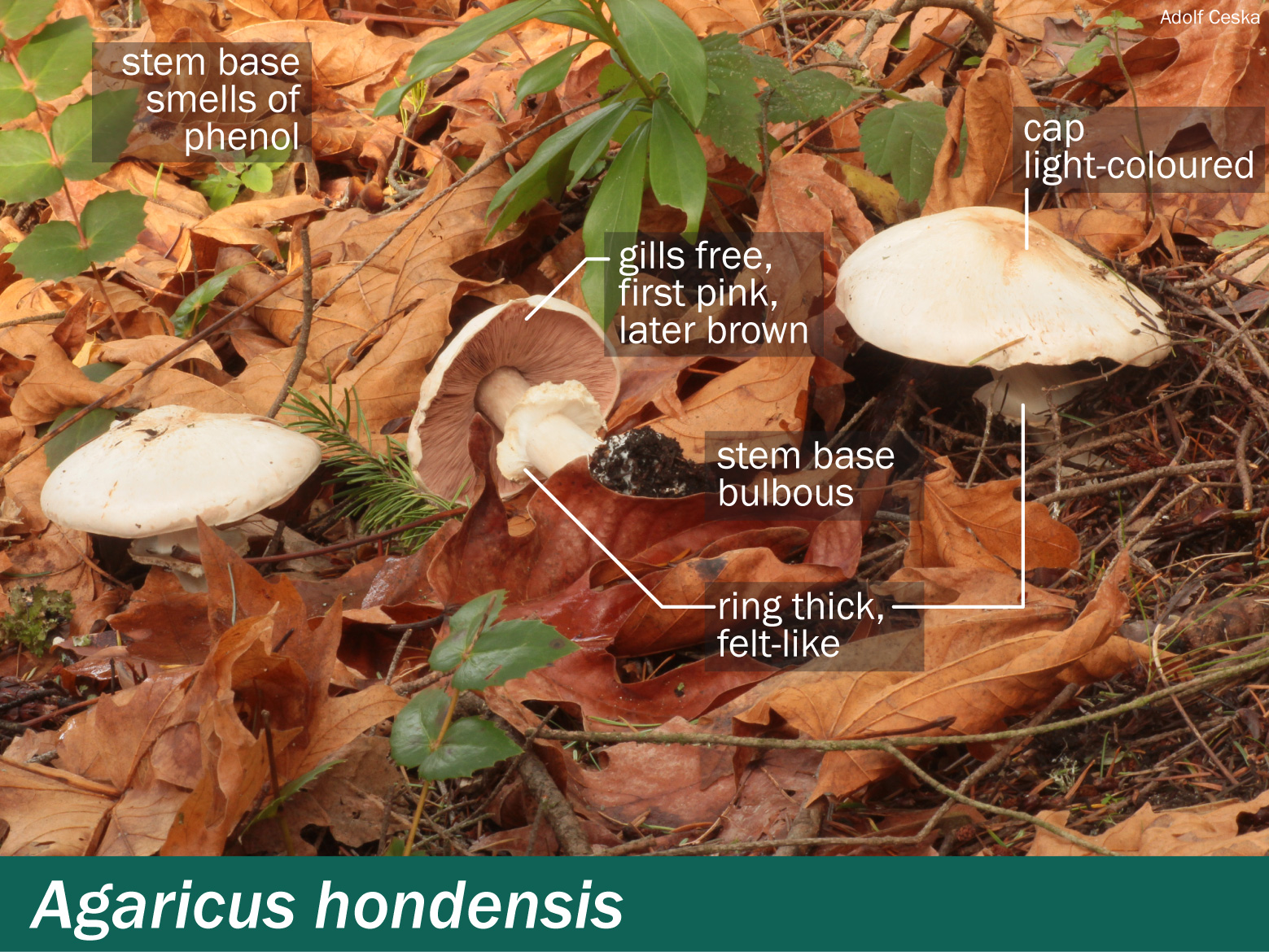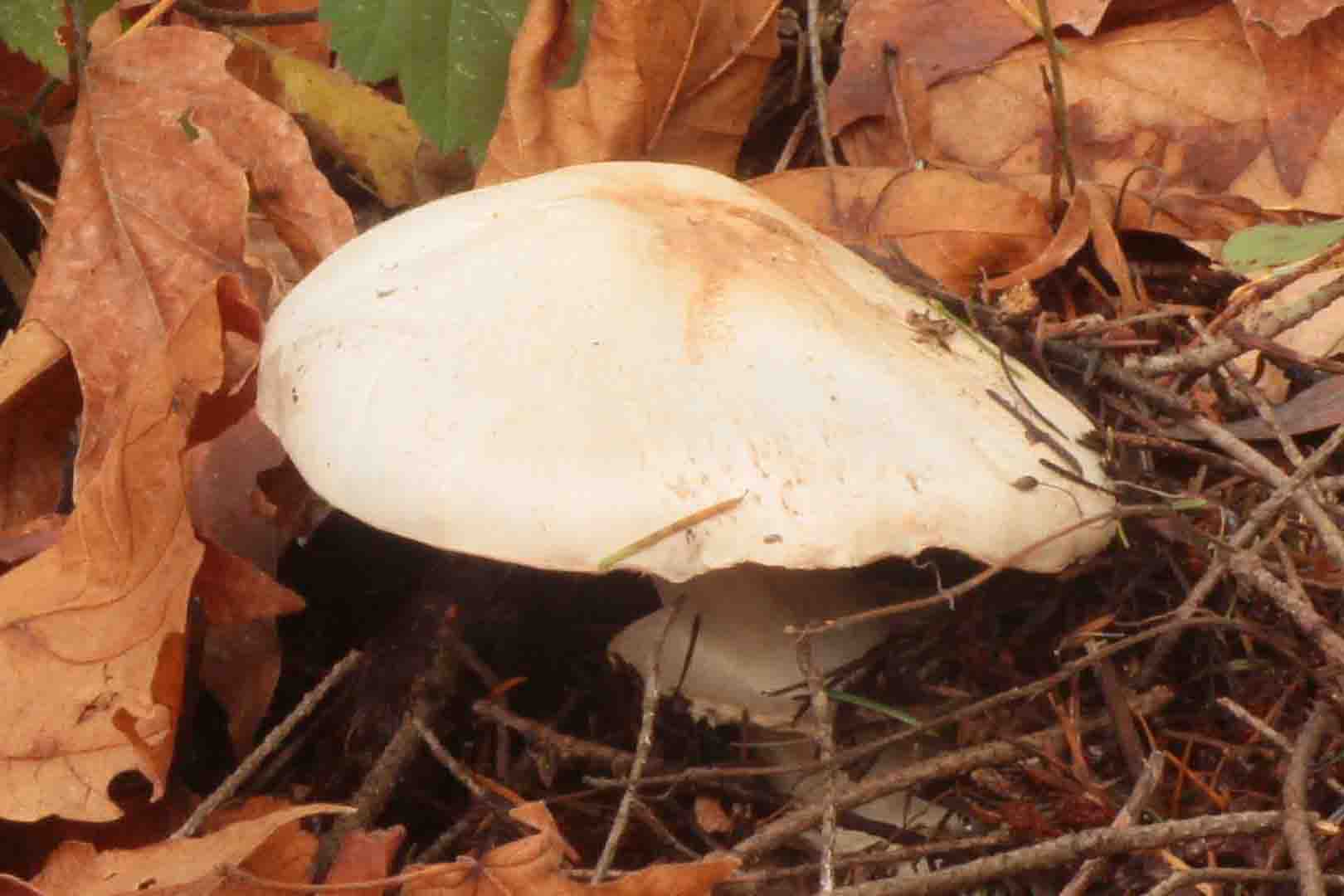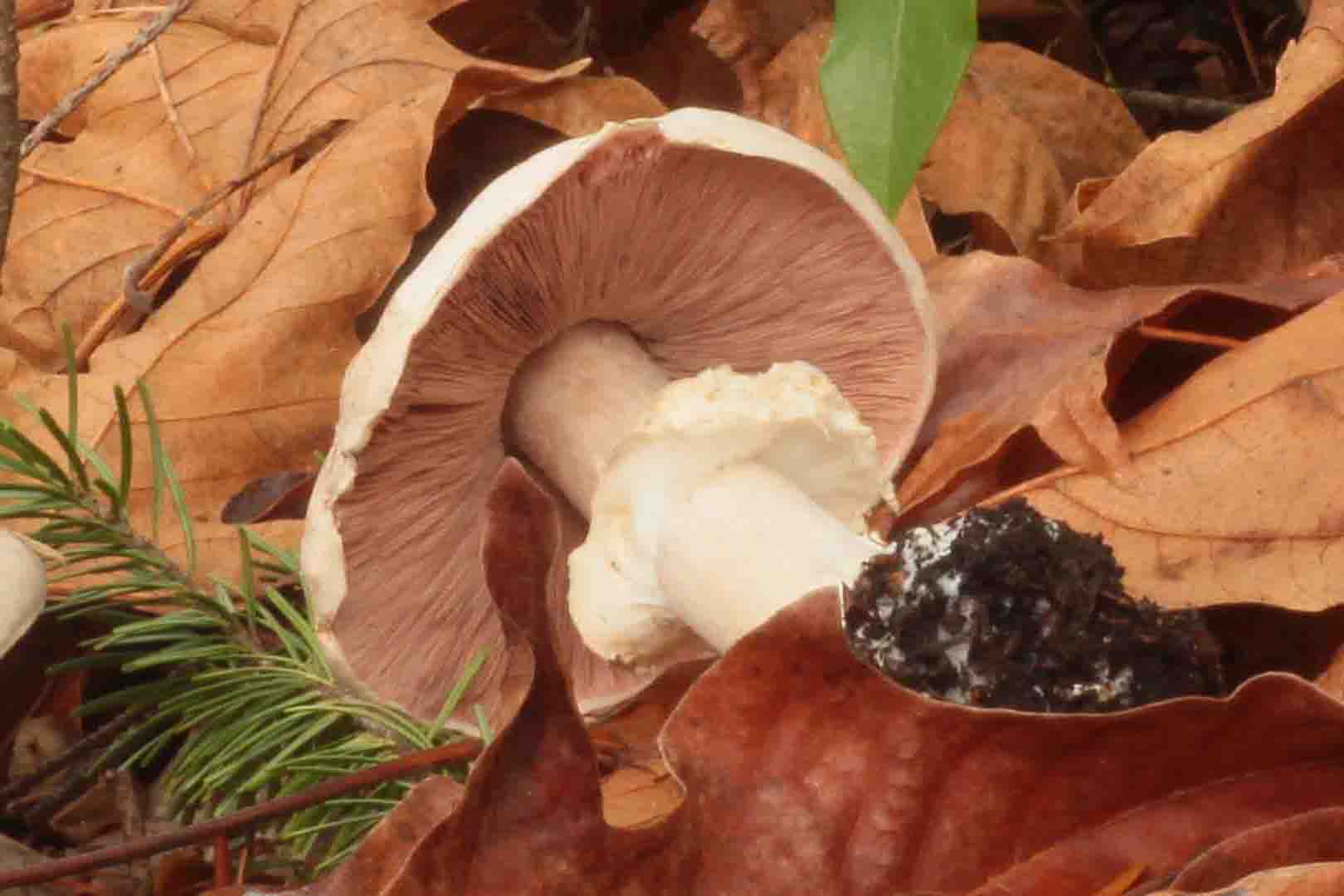Agaricus hondensis — Felt-ringed agaricus
Odour: Mild or faintly phenolic, but the base of the stem of a mature or old mushroom, if squeezed, usually smells strongly like phenol or creosote.
Cap: 4–15 cm wide, first hemispherical, then opening to become convex or almost flat. Cap white to cream, darker in centre and darkening also with age. Caps may be smooth, or with delicate beige or pinkish fibrils that are pressed closely to the cap surface. Flesh is firm, white and solid5.
Gills: Free, crowded, initially light gray to pink, turning chocolate brown as the mushroom ages.
Stem: 4.5-15 cm long, 1.5-4 cm wide at the top, almost always expanding to a base that is club-like and 2-3 cm wide. Smooth, white. It may develop yellowish stains if scratched, especially at its base.
Ring or veil: White, forming a stiff felt-like ledge that usually flares out around the stem. The ring is almost perpendicular to the stem, collapsing only when the mushroom is old.
Cup: None.
Spores: 4.5-6 x 3-4 µm 2, ellipsoid, smooth, purplish-brown6.
Habitat: On the ground, a forest species, under Douglas fir (Pseudotsuga menziesii), western red cedar (Thuja plicata) and other conifers in the Pacific northwest1, occasionally also under hardwoods, and in California, under redwoods3, saprotrophic.
Geographic range: Western North America1.
Symptoms: Time of onset 15 min to 1 hour; nausea, vomiting, watery to bloody diarrhoea, abdominal pain, muscle pain. Symptoms usually do not last longer than 24 hours.
Treatment: Contact your regional Poison Control Centre if you or someone you know is ill after eating any Agaricus species. Poison Centres provide free, expert medical advice 24 hours a day, seven days a week. If possible, save the mushrooms or some of the leftover food containing the mushrooms to help confirm identification.
Poison Control:
British Columbia: 604-682-5050 or 1-800-567-8911.
United States (WA, OR, ID): 1-800-222-1222.



